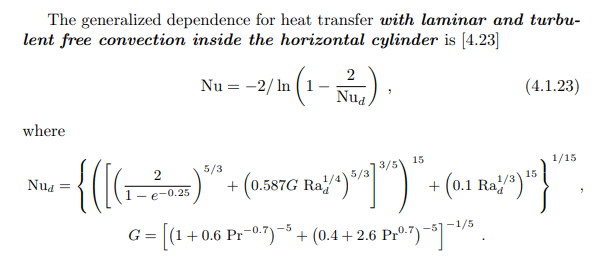teknomania
Mechanical
- Nov 22, 2007
- 26
I have a transient pipe model (internal flow of water inside the pipe) that can calculate the water temperature distribution through the pipe length over time (solving convection-diffusion equation with heat sink).
This pipe model considers the heat transfer (as loss from the water to the surrounding ground) at turbulent and laminar flow conditions (using Gnielinski correlation, and Mills correlation to obtain the water thermal resistance, respectively).
My Question: How can I calculate the water thermal resistance when there is no flow condition?
“In life, the truest guide is science” – Mustafa Kemal Atatürk
This pipe model considers the heat transfer (as loss from the water to the surrounding ground) at turbulent and laminar flow conditions (using Gnielinski correlation, and Mills correlation to obtain the water thermal resistance, respectively).
My Question: How can I calculate the water thermal resistance when there is no flow condition?
“In life, the truest guide is science” – Mustafa Kemal Atatürk

